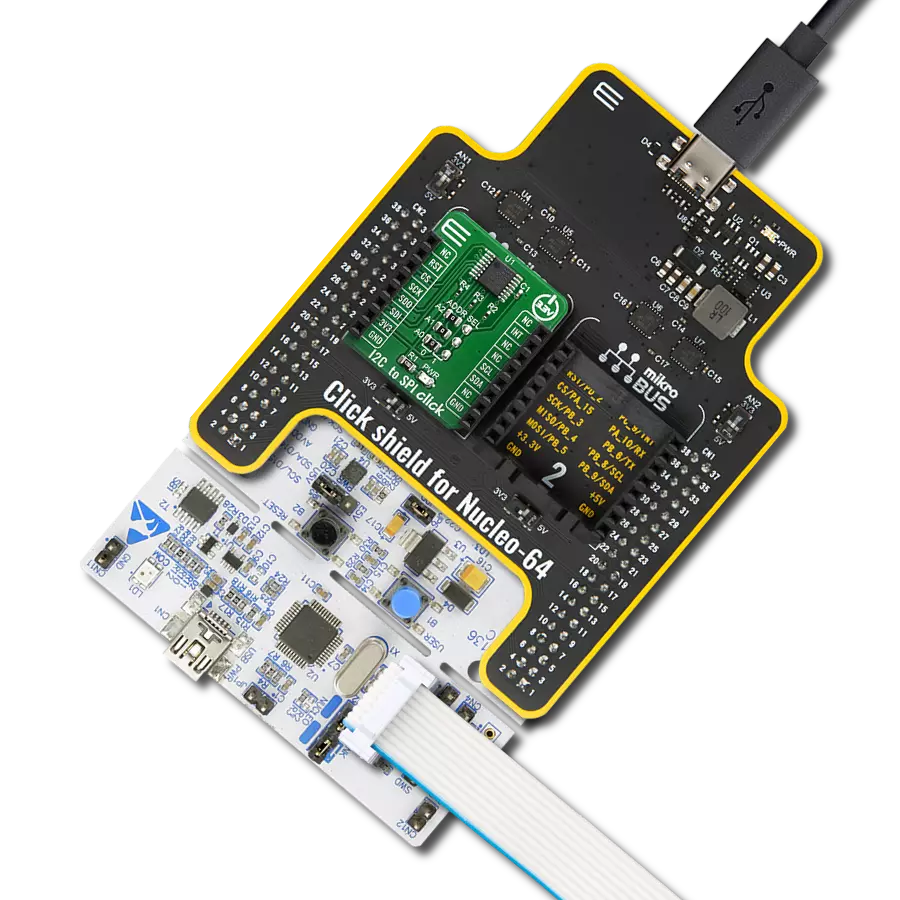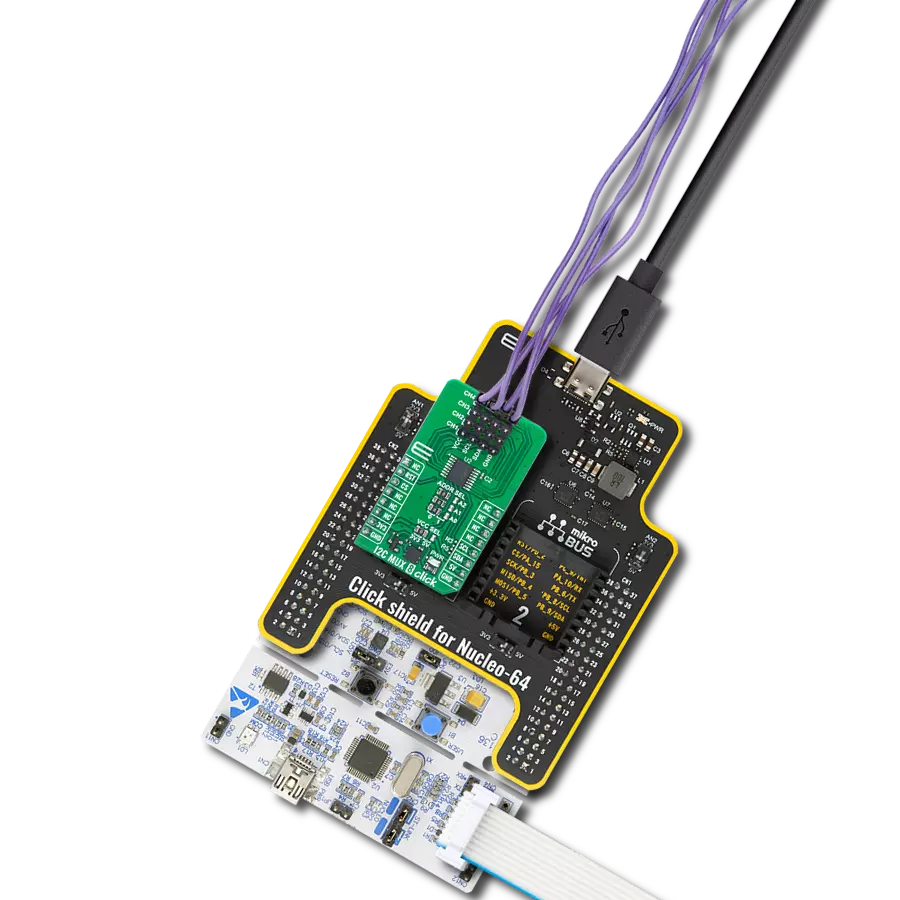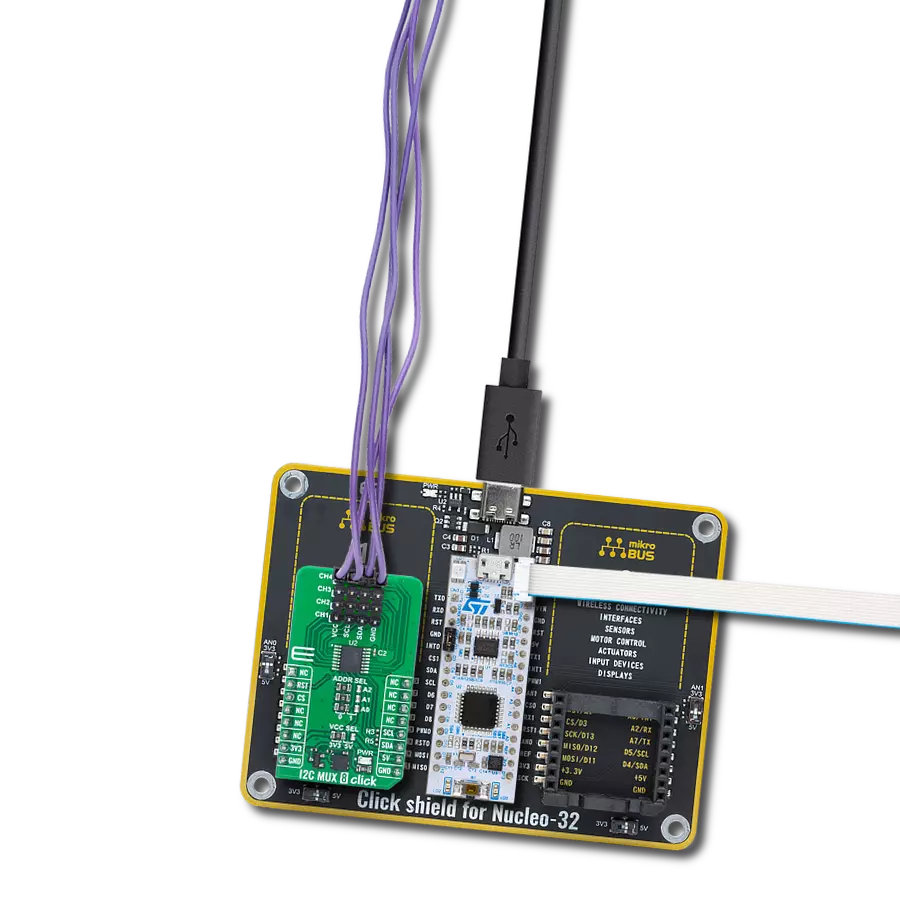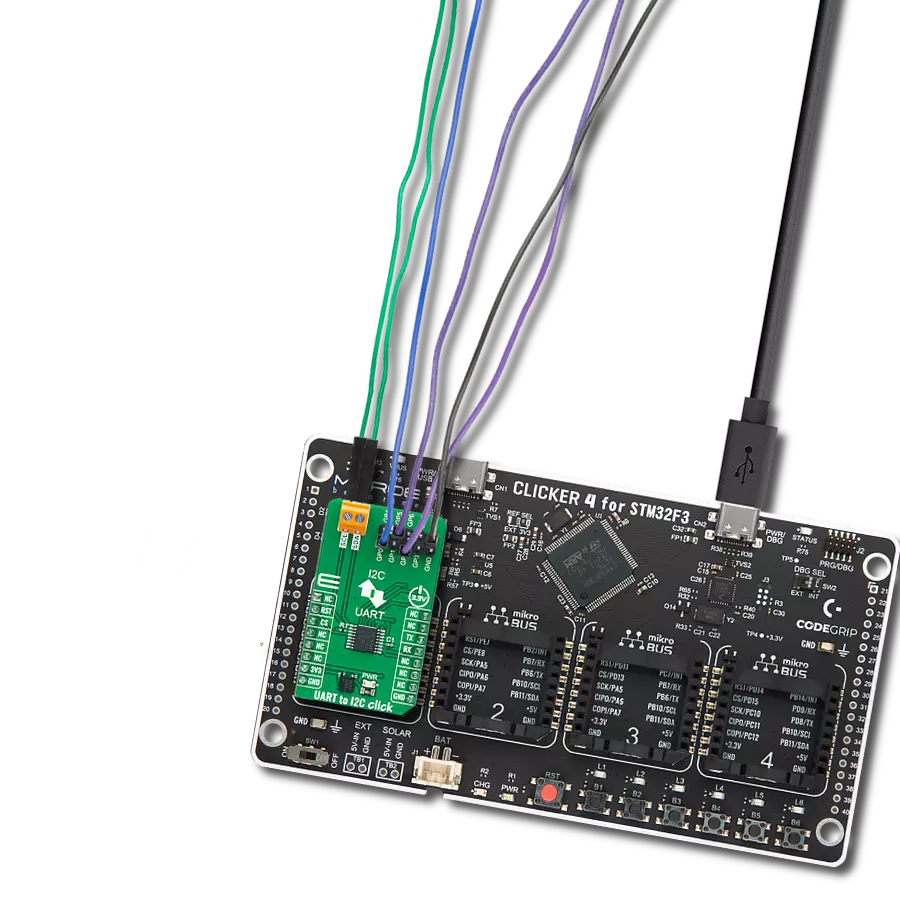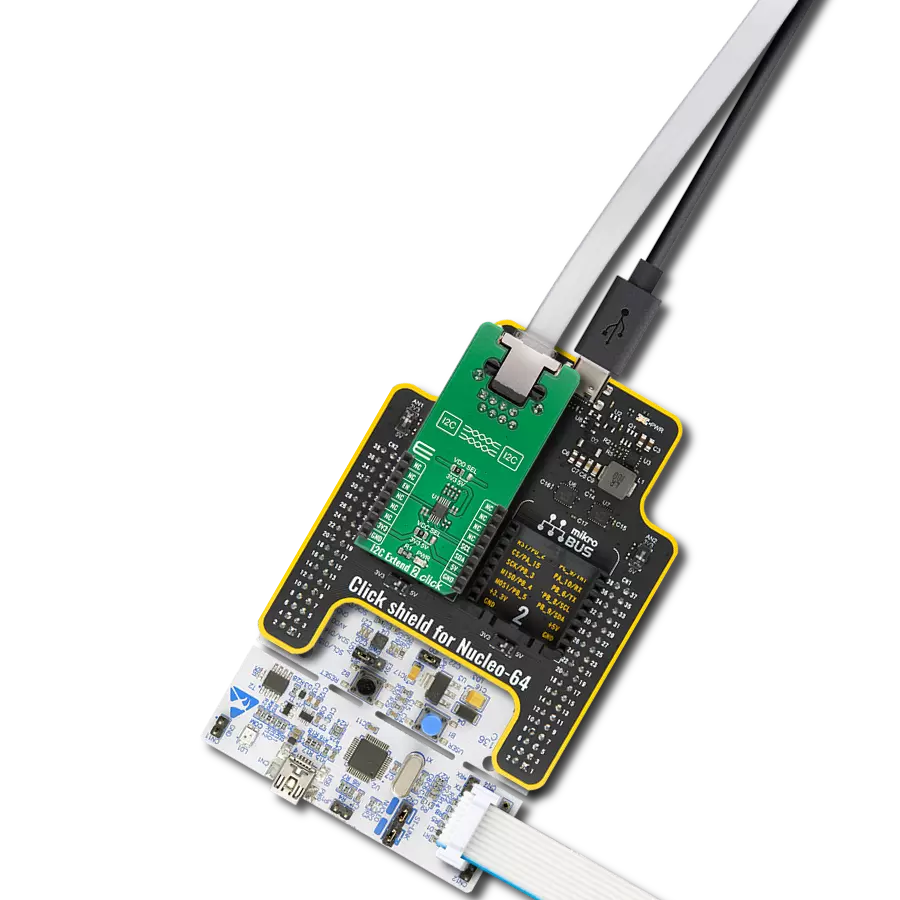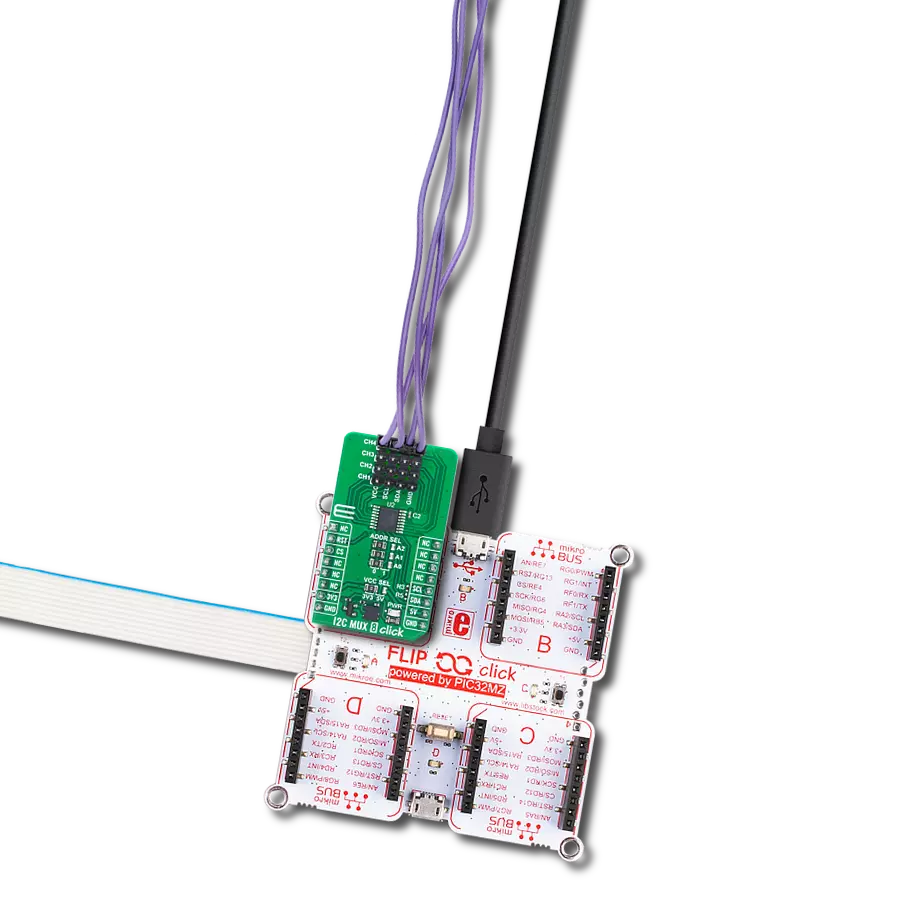Our I2C communication isolator solution shields your data from interference and noise, ensuring secure and reliable communication in sensitive applications
A
A
Hardware Overview
How does it work?
I2C Isolator 3 Click is based on the CPC5902, a dual optically isolated bidirectional logic-bus repeater from IXYS Integrated Circuits Division. It bidirectionally buffers the two I2C signals across the isolation barrier and supports I2C clock stretching while providing 3750Vrms of galvanic isolation. The buffered signals will always return to their proper value after a transient interruption on either side. Unlike competitive magnetically isolated digital isolators, transformers, or capacitive isolators, the CPC5902 doesn’t need to be clocked periodically to sustain the logic states. Besides, it offers glitch-free operation, excellent reliability, and a very long operational life. If different supply voltage levels are used at each power supply side, it can also function as a logic
level translator for levels as low as 2.7V or as high as 5.5V. This optically coupled I2C bus repeater is ideal for Power-over-Ethernet (PoE) applications, buffering and isolating the clock and data signals between the host controller and the Power Supply Equipment (PSE) controller. Additional applications include a power supply high-side interface, an I2C bus length extender, and isolated signal monitoring and control. An extensive operational power supply range of 2.7V to 5.5V enables I2C logic-level translation applications. I2C Isolator 3 Click communicates with MCU using the standard I2C 2-Wire interface and supports both Standard and Fast Mode with a transfer rate of up to 400kbps. The CPC5902 is also fully compatible with any single or double-wire bus in the
frequency range from 0 Hz to 500 kHz, corresponding to a 400 kbps transfer rate for the I2C bus. It also possesses two terminals labeled as VIN and I2C at the bottom of the Click board™, where VIN represents the B-side power supply of the repeater, while the other I2C corresponds to the isolated bidirectional logic-bus terminal. This Click board™ can operate with either 3.3V or 5V logic voltage levels selected via the VCC SEL jumper. This way, both 3.3V and 5V capable MCUs can use the communication lines properly. Also, this Click board™ comes equipped with a library containing easy-to-use functions and an example code that can be used as a reference for further development.
Features overview
Development board
Nucleo-64 with STM32F091RC MCU offers a cost-effective and adaptable platform for developers to explore new ideas and prototype their designs. This board harnesses the versatility of the STM32 microcontroller, enabling users to select the optimal balance of performance and power consumption for their projects. It accommodates the STM32 microcontroller in the LQFP64 package and includes essential components such as a user LED, which doubles as an ARDUINO® signal, alongside user and reset push-buttons, and a 32.768kHz crystal oscillator for precise timing operations. Designed with expansion and flexibility in mind, the Nucleo-64 board features an ARDUINO® Uno V3 expansion connector and ST morpho extension pin
headers, granting complete access to the STM32's I/Os for comprehensive project integration. Power supply options are adaptable, supporting ST-LINK USB VBUS or external power sources, ensuring adaptability in various development environments. The board also has an on-board ST-LINK debugger/programmer with USB re-enumeration capability, simplifying the programming and debugging process. Moreover, the board is designed to simplify advanced development with its external SMPS for efficient Vcore logic supply, support for USB Device full speed or USB SNK/UFP full speed, and built-in cryptographic features, enhancing both the power efficiency and security of projects. Additional connectivity is
provided through dedicated connectors for external SMPS experimentation, a USB connector for the ST-LINK, and a MIPI® debug connector, expanding the possibilities for hardware interfacing and experimentation. Developers will find extensive support through comprehensive free software libraries and examples, courtesy of the STM32Cube MCU Package. This, combined with compatibility with a wide array of Integrated Development Environments (IDEs), including IAR Embedded Workbench®, MDK-ARM, and STM32CubeIDE, ensures a smooth and efficient development experience, allowing users to fully leverage the capabilities of the Nucleo-64 board in their projects.
Microcontroller Overview
MCU Card / MCU
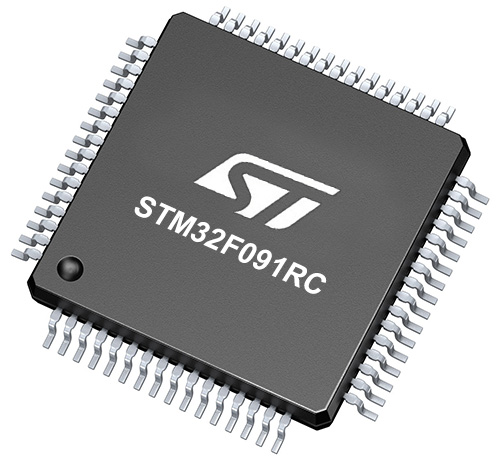
Architecture
ARM Cortex-M0
MCU Memory (KB)
256
Silicon Vendor
STMicroelectronics
Pin count
64
RAM (Bytes)
32768
You complete me!
Accessories
Click Shield for Nucleo-64 comes equipped with two proprietary mikroBUS™ sockets, allowing all the Click board™ devices to be interfaced with the STM32 Nucleo-64 board with no effort. This way, Mikroe allows its users to add any functionality from our ever-growing range of Click boards™, such as WiFi, GSM, GPS, Bluetooth, ZigBee, environmental sensors, LEDs, speech recognition, motor control, movement sensors, and many more. More than 1537 Click boards™, which can be stacked and integrated, are at your disposal. The STM32 Nucleo-64 boards are based on the microcontrollers in 64-pin packages, a 32-bit MCU with an ARM Cortex M4 processor operating at 84MHz, 512Kb Flash, and 96KB SRAM, divided into two regions where the top section represents the ST-Link/V2 debugger and programmer while the bottom section of the board is an actual development board. These boards are controlled and powered conveniently through a USB connection to program and efficiently debug the Nucleo-64 board out of the box, with an additional USB cable connected to the USB mini port on the board. Most of the STM32 microcontroller pins are brought to the IO pins on the left and right edge of the board, which are then connected to two existing mikroBUS™ sockets. This Click Shield also has several switches that perform functions such as selecting the logic levels of analog signals on mikroBUS™ sockets and selecting logic voltage levels of the mikroBUS™ sockets themselves. Besides, the user is offered the possibility of using any Click board™ with the help of existing bidirectional level-shifting voltage translators, regardless of whether the Click board™ operates at a 3.3V or 5V logic voltage level. Once you connect the STM32 Nucleo-64 board with our Click Shield for Nucleo-64, you can access hundreds of Click boards™, working with 3.3V or 5V logic voltage levels.
Used MCU Pins
mikroBUS™ mapper
Take a closer look
Click board™ Schematic

Step by step
Project assembly
Software Support
Library Description
This library contains API for I2C Isolator 3 Click driver.
Key functions:
i2cisolator3_send_cmd- This function sends the desired command to a remote device wired with CPC5902i2cisolator3_write_byte- This function writes the byte of data to the targeted 8-bit register address of the remote device wired with CPC5902i2cisolator3_read_byte- This function read a the byte of data from the targeted 8-bit register address of the remote device wired with CPC5902
Open Source
Code example
The complete application code and a ready-to-use project are available through the NECTO Studio Package Manager for direct installation in the NECTO Studio. The application code can also be found on the MIKROE GitHub account.
/*!
* @file main.c
* @brief I2CIsolator3 Click example
*
* # Description
* This is an example that demonstrates the use of the I2C Isolator 3 Click board. In this example, we measure temperature
* from the Thermo 20 Click connected to the I2C Isolator 3 Click board.
*
* The demo application is composed of two sections :
*
* ## Application Init
* Initializes I2C and start to write log. Initialization driver enables - I2C,
* set I2C slave address of the Thermo 20 Click, performs software reset, also write log.
*
* ## Application Task
* In this example via Thermo 20 Click we get the data processed by the function. When the function processes the data, we get
* the temperature information. All data logs write on USB UART changes every 3 sec.
*
* Additional Functions :
* - void calculate_temperature( ) - Calculate temperature in degrees Celsius.
*
* @author Jelena Milosavljevic
*
*/
#include "board.h"
#include "log.h"
#include "i2cisolator3.h"
static i2cisolator3_t i2cisolator3;
static log_t logger;
static float temperature;
static char log_text[ 50 ];
void calculate_temperature ( ) {
uint16_t res_adc;
uint8_t rx_buf[ 3 ];
i2cisolator3_burst_read ( &i2cisolator3, I2CISOLATOR3_THERMO20_CMD_READ_ADC, rx_buf, 3 );
res_adc = rx_buf[ 0 ];
res_adc <<= 8;
res_adc |= rx_buf[ 1 ];
temperature = ( float ) res_adc;
temperature /= 65535.0;
temperature *= 165.0;
temperature -= 40.0;
}
void application_init ( void ) {
log_cfg_t log_cfg; /**< Logger config object. */
i2cisolator3_cfg_t i2cisolator3_cfg; /**< Click config object. */
/**
* Logger initialization.
* Default baud rate: 115200
* Default log level: LOG_LEVEL_DEBUG
* @note If USB_UART_RX and USB_UART_TX
* are defined as HAL_PIN_NC, you will
* need to define them manually for log to work.
* See @b LOG_MAP_USB_UART macro definition for detailed explanation.
*/
LOG_MAP_USB_UART( log_cfg );
log_init( &logger, &log_cfg );
log_info( &logger, " Application Init " );
// Click initialization.
i2cisolator3_cfg_setup( &i2cisolator3_cfg );
I2CISOLATOR3_MAP_MIKROBUS( i2cisolator3_cfg, MIKROBUS_1 );
err_t init_flag = i2cisolator3_init( &i2cisolator3, &i2cisolator3_cfg );
if ( I2C_MASTER_ERROR == init_flag ) {
log_error( &logger, " Application Init Error. " );
log_info( &logger, " Please, run program again... " );
for ( ; ; );
}
log_printf( &logger, " Driver Init. Done \r\n" );
log_printf( &logger, " Set I2C Slave Address \r\n" );
log_printf( &logger, " of the Thermo 20 Click \r\n" );
Delay_ms ( 100 );
log_printf( &logger, "--------------------------\r\n" );
log_printf( &logger, " Software Reset \r\n" );
i2cisolator3_send_cmd( &i2cisolator3, I2CISOLATOR3_THERMO20_CMD_RESET );
Delay_ms ( 100 );
log_printf( &logger, "--------------------------\r\n" );
log_printf( &logger, " Start Measuring \r\n" );
log_printf( &logger, "--------------------------\r\n" );
Delay_ms ( 100 );
log_info( &logger, " Application Task \r\n" );
}
void application_task ( void ) {
i2cisolator3_send_cmd( &i2cisolator3, I2CISOLATOR3_THERMO20_CMD_CONVERSION );
Delay_ms ( 100 );
calculate_temperature( );
log_printf( &logger, "Temperature : %.2f \r\n", temperature );
Delay_ms ( 1000 );
Delay_ms ( 1000 );
Delay_ms ( 1000 );
}
int main ( void )
{
/* Do not remove this line or clock might not be set correctly. */
#ifdef PREINIT_SUPPORTED
preinit();
#endif
application_init( );
for ( ; ; )
{
application_task( );
}
return 0;
}
// ------------------------------------------------------------------------ END
Additional Support
Resources
Category:I2C




















